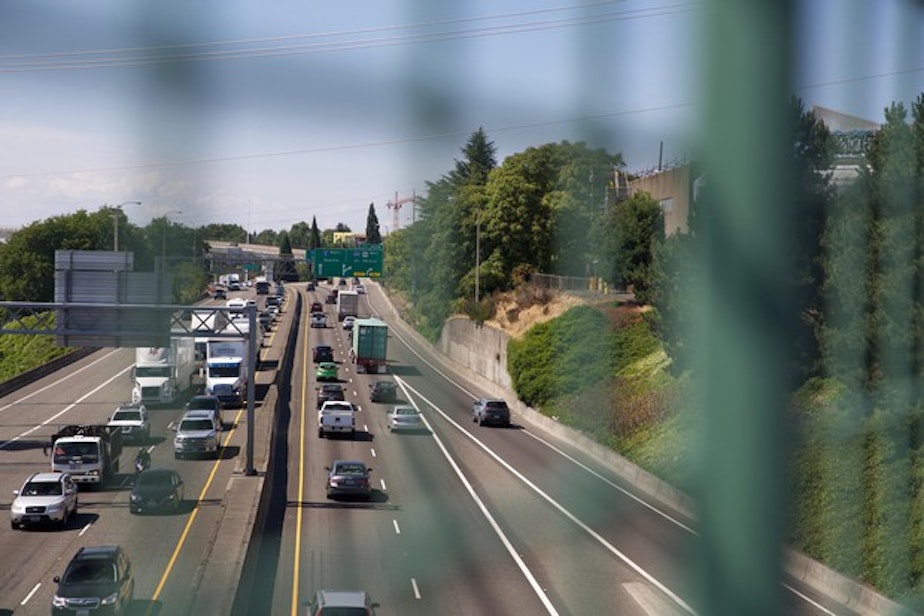Oregon Transportation Officials Seek Federal Approval For Tolling Plan

Harriet Tubman Middle School (uphill, on right) sits above Interstate 5, causing substantial air quality problems at the school, according to a Portland State University study in 2018.
The Oregon Transportation Commission on Friday unanimously agreed to ask the federal government for permission to impose tolls on sections of interstates 5 and 205 in the Portland area.
The commission also called for a broader study of tolling throughout the area’s freeway network, saying that it could be a powerful tool for attacking growing traffic congestion.
“It is a problem all over, and we need to address it all over,” said Commissioner Sean O’Hollaren, who is also a Nike executive.
The commission’s action, taken during a meeting in John Day, was expected. The Oregon Legislature last year ordered state officials to develop a congestion pricing plan for the Portland area.
Both Washington and California have increasingly turned to tolls as a way to encourage people to avoid driving on crowded highways. Using electronic technology, they can now be implemented without the use of tollbooths.
It likely would be years before any tolls are put in place, and a number of hurdles — some of them political — remain.
Republican Rep. Jaime Herrera Beutler of Southwest Washington quickly blasted the commission for continuing to hold out the possibility of tolling both I-5 and I-205 starting at the Oregon-Washington state line.
She said in a statement that the commission took another step “to levy tolls on all Washington commuters who drive to Oregon for work, with no corresponding infrastructure improvements planned for the area.”
However, the initial plan that Oregon will present to the Federal Highway Administration for approval is much more limited.
It calls for tolling a 7-mile stretch of I-5 from Northeast Going Street to Southwest Multnomah Boulevard. That stretch is also in line for a project to widen the freeway in the Rose Quarter area.
In addition, the plan calls for tolling the area on or around the Abernethy Bridge in Oregon City. Last year’s transportation package also calls for adding another lane to I-205, which now narrows to two lanes at the bridge and southwest to the Stafford Road exit.
Dave Thompson, a spokesman for the transportation department, said the state intends to submit its application for tolling these two projects by the end of the year.
Thompson added that “none of this is a done deal.” The commission could later decide it first wants to go with a broader tolling plan, he said.
O’Hollaren said he wanted to move toward “creating a loop, a doughnut, a beltway … around the Portland metropolitan area” that would be subject to congestion pricing. He said looking at all of the Portland freeways — including highways 26 and 217 — would help ameliorate concerns from Washington state officials that Oregon is aiming tolls at commuters from Vancouver.
Chris Hagerbaumer of the Oregon Environmental Council, one of the groups that pushed the Oregon Legislature to call for congestion pricing, praised the commission for moving ahead with tolling.
But she said she wanted to ensure that at the same time, officials work on plans to provide alternatives — such as beefed up mass transit — to commuters. She also said officials should carefully study whether their tolling plans would cause problems by diverting too much traffic onto neighborhood streets. [Copyright 2018 Oregon Public Broadcasting]



